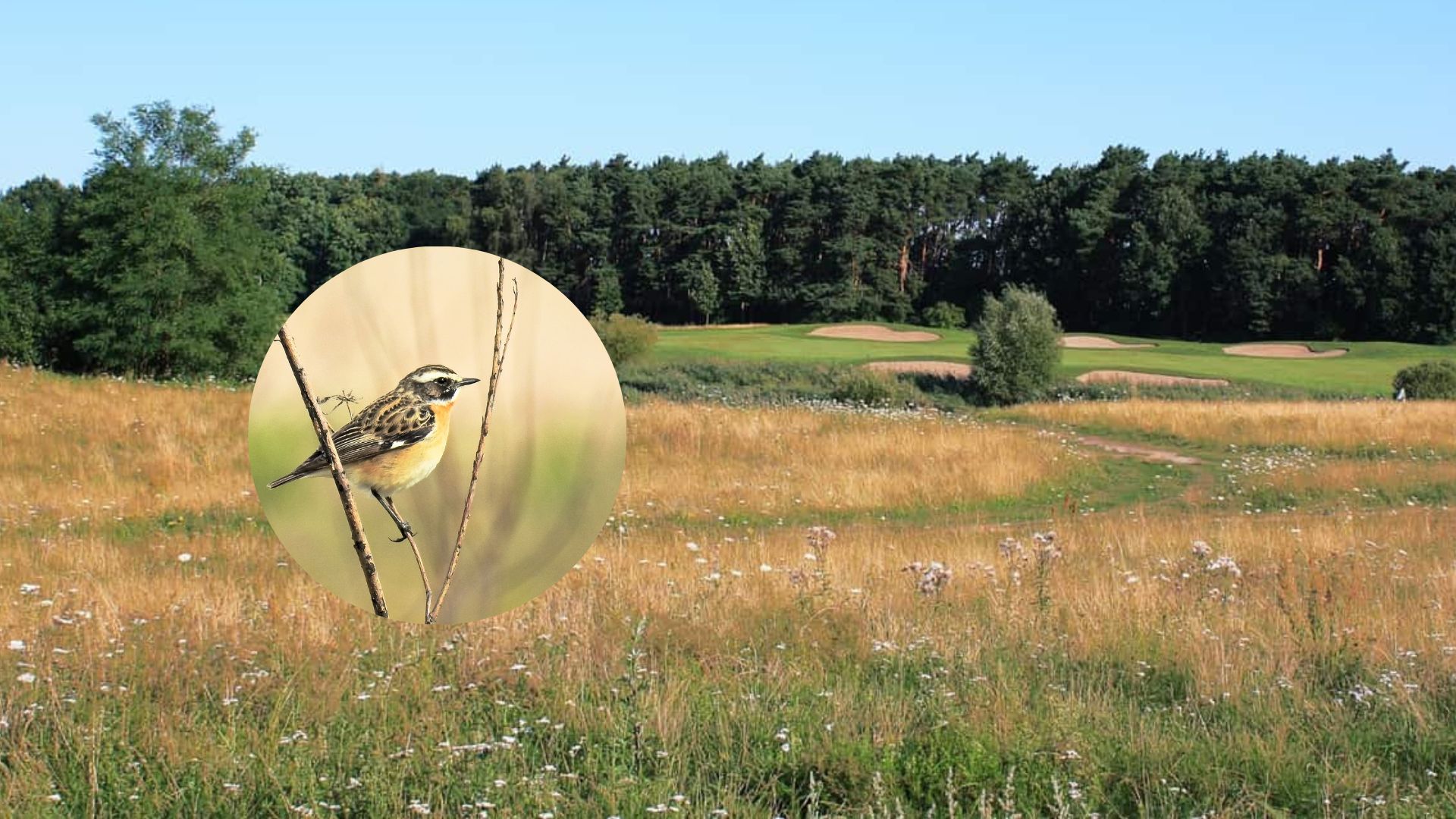Golf & Country Club Seddiner See: breeding ground for whinchat
At the Golf- und Country Club Seddiner See, the whinchat, Bird of the Year 2023, obviously feels at home. During the scientific fauna and flora monitoring carried out on the golf course in 2017, a total of 448 territories of breeding birds were documented on the approximately 185-hectare site during several inspections by ornithologists. An additional 133 breeding territories were detected in the fringe area of the golf course.
A total of 66 breeding bird species were recorded. About one third of them (21 breeding bird species) had a protection status on the Red List of Brandenburg (2008) and / or the Red List of Germany (2015) in 2017.
Several breeding pairs detected
Of the breeding bird species with conservation status, nine were category 3 (endangered) and one was category 2 (severely endangered). The latter bird species was the Whinchat, which was detected with three breeding territories on the golf course as well as another breeding territory in the peripheral area of the golf course. The Whinchat population thus appears to be sustainably stable at the golf course site. Already during a fauna and flora monitoring conducted in 2008, four whinchat breeding territories were documented on the golf course.
This is all the more significant because the whinchat is included in the Red List Brandenburg and was still classified as “endangered” (category 3) in 1997, but was then reclassified as “critically endangered” in category 2 in 2008. The population threat to the Whinchat had apparently continued to increase during this period. This risk situation has not changed to this day. In the current 2019 Red List of Brandenburg, the Whinchat is still classified as “critically endangered”. The German Federal Agency for Nature Conservation (BfN) quantified the nationwide brown thrasher population for the period 2011 – 2016 at only 19,500 – 35,000 individuals – with a further declining trend.
More breeding birds after the construction of the golf course
However, the territory records of the whinchat on the golf course area are also significant because the whinchat was documented in this area as early as 1994 – before construction of the golf course began. The construction and operation of the golf course have thus demonstrably not led to a migration of whinchats, but – quite the opposite – have contributed to an increase in species diversity among breeding birds overall on the golf course site: during the survey in 1994, a total of 57 breeding bird species were recorded; in 2008, this figure had already risen to 61 species, and in 2017, 66 breeding bird species were recorded. And in 2023 – the year of the whinchat?
Text: Horst Schubert







